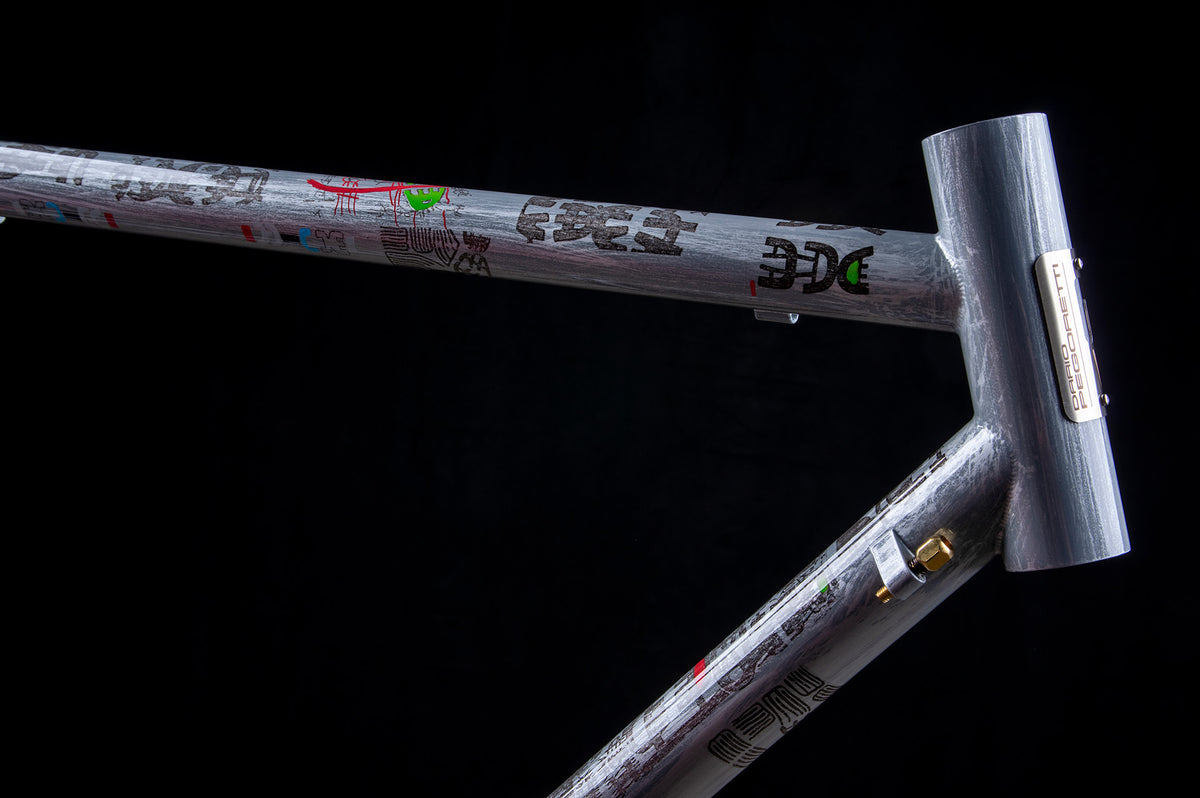
Remembering Tom Simpson - Master of the Classics
Were it not for his untimely death on the slopes of Mont Ventoux aged just 29, Tom Simpson would probably have been one of Britain's most successful cyclists. As it stands he was one of Britain's best one-day classics riders, the first to be World Champion and the first to wear the coveted yellow jersey. That these accomplishments occurred at a time when almost no-one from Britain made it as a professional on the continent (let alone won races), and was at the sharp end of the field is incredible in itself.

Tom Simpson on a lap of honour at the famous Herne Hill Velodrome. Image courtesy of Lincolnshire Live.
Born in County Durham, Tom moved to Harworth in Nottinghamshire when he was young, taking up cycling as a teenager. Focusing on the track, in particular the pursuit discipline, Tom was selected for the Olympics at just 18 and won a Bronze medal in the Team Pursuit, over the next few years he turned his attention to riding as a professional on the road, moving to France in early 1959. After graduating to the first team, Tom won his first monument in 1961; the Tour Of Flanders, and the next year donned the maillot jaune at his second Tour de France, going on to finish 6th that year.

Tom in 1965, the year he became World Road Race Champion. Image courtesy of Paris-Roubaix.
Now an established Pro with the Peugeot-BP-Englebert team, Tom continued his aggressive riding across various disciplines, winning the super-long Bordeaux-Paris in 1963, riding in six day track events and winning another classic in 1964; Milan-San-Remo. 1965 saw Tom win Britain's first ever World Championship, and perhaps more importantly for the image of cycling he won the BBC's prestigious ‘Sports Personality of the Year’ award. By now Tom was both a household name in Britain and a feared and respected competitor on the International cycling circuit, he spoke several languages so integrated well, but really played on his perceived 'Englishness', often sporting smart suits and playing up to his nickname 'Major Simpson'.

In 'Major Tom' mode, looking very dapper, and very English. Image courtesy of Paris-Roubaix.
The next year was dogged by injury, often this was a side-effect of Tom's all or nothing style and fast descending, but in January he broke his leg skiing (not his first accident in the off-season!) and on his return struggled for form. His Tour started well that year, but on stage sixteen he crashed on a descent only to recover and be hit by a press motorcycle on the next one!

What indoor training looked like in 1960! Image courtesy of Cycling Weekly.
For 1967 Tom was focused on winning the Tour, riding a number of stage races in preparation, and winning Paris-Nice with the help of his young team mate Eddy Merckx, and taking two stages of that year’s Vuelta too. In the Tour Tom had identified three stages he would like to take, riding conservatively (for him) until the caravan hit the mountains. He was in sixth place after the first week but by stage ten he was struggling with stomach problems and suffered throughout the day. One of his targeted days was stage thirteen, a climb up the mighty Mont Ventoux in scorching hot weather, it was to be his last day on the bike.

Tom Simpson climbing Mont Ventoux in 1967. Image courtesy of Cycling Passion.
A combination of 45 degree heat, and a performance enhancing mix of brandy and amphetamines (combined with the Tour’s restriction on the number of water bottles riders could consume during a stage) resulted in Tom falling from his bike unconscious, just one kilometer from the summit. He was airlifted to hospital but pronounced dead that evening, the exhaustion and dehydration having taken its toll.
Taken in the context of today's 'clean' sports this seems astonishing, yet the majority of the peloton were doping and getting away with it, and it was only after Tom's death that mandatory testing was introduced in the largest races. Tom Simpson was a charismatic, determined cyclist who made a great impact on the continent with very little help, he became a household name and was looked up to by British amateurs and seasoned continental professionals alike, his mark on the sport is, and will be, ever-lasting.
For further viewing, Cycling Weekly have a fantastic collection of photos documenting the life of Tom Simpson, a big thanks to them and also the Horton Collection too.
If you enjoyed this article please don't forget to share it around 😊
Leave a comment
Comments will be approved before showing up.
Also in The Journal

Eddy Merckx - The Cannibal

Art & Bicycles – Dario Pegoretti - An Italian Master


Roly Seaton
Author